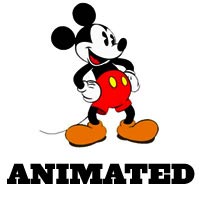The Emergence of Pixar:
A division of Lucasfilm (and Industrial Light and
Magic (ILM)), created in 1979 and known as the Graphics Group, was
purchased by Apple Computer's Steve Jobs for $5 million, renamed
Pixar Animation Studios, and made an independent company in 1986. [Note:
ILM had created the startling, first completely CGI-animated
character - the 'stained-glass knight' in Young Sherlock Holmes
(1985), bringing the film a Best Visual Effects nomination.]
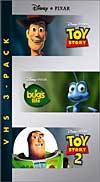 Pixar
Studios (and director John Lasseter) and Disney, in a 1991 deal worth
$26 million, created the first completely computer-generated
animated feature film - the landmark Toy
Story (1995) - Pixar's
feature debut film, and everything evolved from there. The
visuals were entirely generated from computers, creating a wonderfully-realistic
3-D world with lighting, shading, and textures, that included real
toys in supporting roles (Etch-A-Sketch, Slinky Dog, the plastic
toy soldiers, Mr. Potato Head, etc.). The story itself dealt with
the anxiety experienced by a toy (cowboy Woody) upon the arrival
of a rival plaything (spacetoy Buzz Lightyear) -- mirroring the tension
felt by a child when a younger sibling is born. The tale also referenced
the historical change in genre emphasis in the 50s when westerns
were supplanted by science-fiction films. It scored three Oscar nominations:
Best Original Score, Best Original Screenplay, and Best Original
Song ("You've Got a Friend"), and at the box-office totaled
$192 million (domestic) and $373.5 million (worldwide). Pixar
Studios (and director John Lasseter) and Disney, in a 1991 deal worth
$26 million, created the first completely computer-generated
animated feature film - the landmark Toy
Story (1995) - Pixar's
feature debut film, and everything evolved from there. The
visuals were entirely generated from computers, creating a wonderfully-realistic
3-D world with lighting, shading, and textures, that included real
toys in supporting roles (Etch-A-Sketch, Slinky Dog, the plastic
toy soldiers, Mr. Potato Head, etc.). The story itself dealt with
the anxiety experienced by a toy (cowboy Woody) upon the arrival
of a rival plaything (spacetoy Buzz Lightyear) -- mirroring the tension
felt by a child when a younger sibling is born. The tale also referenced
the historical change in genre emphasis in the 50s when westerns
were supplanted by science-fiction films. It scored three Oscar nominations:
Best Original Score, Best Original Screenplay, and Best Original
Song ("You've Got a Friend"), and at the box-office totaled
$192 million (domestic) and $373.5 million (worldwide).
The surprise hit of 1995, however, was Best Picture-nominated Babe
(1995), the charming and highly entertaining story of the title
character - a talking barnyard pig with a talent for sheep herding.
Fox released the disappointing Anastasia (1997). DreamWorks and Pacific
Data Images (PDI) released the second computer-animated feature film in history
- the adult-oriented Antz
(1998), with Woody Allen's voice for a misfit, individualist
worker ant named Z. At about the same time, A Bug's Life (1998),
a children's-oriented, computer animated tale based upon Aesop's
fable The Ant and the Grasshopper, was released by Pixar and
Disney (their second teaming).
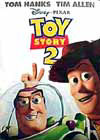 The
year 1998 also showcased other animated films, including the low-budget Rugrats
Movie (1998) (based upon the characters on Nickelodeon's TV series),
and DreamWorks SKG's' epic -
the animated musical feature The Prince of Egypt (1998) about
the Hebrew Exodus from Egypt - the most expensive classically-animated
feature at the time, budgeted at $60 million. The
year 1998 also showcased other animated films, including the low-budget Rugrats
Movie (1998) (based upon the characters on Nickelodeon's TV series),
and DreamWorks SKG's' epic -
the animated musical feature The Prince of Egypt (1998) about
the Hebrew Exodus from Egypt - the most expensive classically-animated
feature at the time, budgeted at $60 million.
Pixar's sequel to its successful 1995 computer-animated
hit was released in 1999 with Disney (their third collaboration)
- Toy Story 2 (1999), again with Woody the Cowboy and Buzz
Lightyear. So were two hand-drawn animations from Warner Bros: the
critically-acclaimed animated adventure Iron Giant (1999) by director Brad Bird
(his feature debut), about a fifty-foot robot befriended by a nine
year-old boy, and the animated musical The King and I (1999).
Sony Pictures brought to life E.B. White's classic children's story Stuart
Little (1999) featuring a clothes-wearing and talking white mouse
(voice of Michael J. Fox) - it was a hugely successful film, with
a combination of computer animated characters and live action.
Animations at the Start of the New Century - Disney
and Others:
As CGI became more prominent, would
traditionally-animated, old school cel-animated films (like this
one) be destined to become non-existent and outdated relics of the
last century? Disney's "Experimental Era" began, following after its
"Disney Renaissance" in the previous decade:
- Walt Disney Pictures was very busy in the year 2000,
releasing the computer-animated Dinosaur (2000) about prehistoric
life, and the hand-drawn animated comedy-adventure The Emperor's
New Groove (2000).
- Disney's Atlantis: The Lost Empire (2001),
its first cartoon produced in 70 mm since The Black Cauldron
(1985), blended CGI with traditional hand-drawn animation,
and was based on the Jules Verne action epic, but it faced stiff
competition from other animated features. Another Disney hand-drawn
effort, Lilo & Stitch (2002), about a lonely Hawaiian
girl and her blue extra-terrestrial friend, was one of the studio's
major box-office hits. Disney's hand-drawn, big-budget,
sci-fi animation Treasure Planet (2002), an outer-space
version of Robert Louis Stevenson's Treasure Island, flopped.
- A significant development may have been signaled
when Walt Disney Studios, after releasing the great-looking,
feature-length theatrical film animation Brother Bear (2003) in
November (also a nominee for Best Animated Feature Film), announced
that this would be their last 2-D animated film for the foreseeable
future, since it was switching to the 3-D, full-CGI style originally
popularized by Pixar. However, Disney's last release in the traditional
2-D animation style was Home on the Range (2004).
- Disney released its first in-house computer-animated
film, Chicken Little (2005), with a partial 3-D release,
about a beleaguered young Chicken Little (voice by Zach Braff)
who was humiliated by his claim that the sky was falling, and subjected
to scorn by most of the town. The young cluck was estranged from
his embarrassed single father Buck Cluck (voice of Gary Marshall)
but vindicated when the "sky" actually fell, in a parody
of a War of the Worlds-style invasion.
- Disney's animated The Princess and the Frog
(2009) (with three Oscar nominations), a modern
day retelling of the classic story The Frog Prince. It
was the studio's first traditional 2-D animated film in 5 years.
It also featured the studio's first-ever black female protagonist,
an African-American princess named Tiana (voice of Anika Noni
Rose). Its box-office was $104 million (domestic) and $267 million
(worldwide).
Walt Disney Animation Studio Feature Films
(1937-present)
The Decade of the 2000s
|
| No. |
Title Screen |
Title (Year) |
Notables |
|
39
|

|
Dinosaur (2000)
|
- a stunning, CGI animated 'photo-realistic' adventure
film - the second Disney CG 3D animation (following Fantasia
2000)
- a hybrid animation - the dinosaurs
and special effects were CGI while most of the backgrounds were
live-action (filmed on location)
- the animation's hero was Aladar, an
Iguanodon separated from his dinosaur family and raised by lemurs
- the most expensive theatrical film release of
the year (at $127.5 million)
- the 11th highest-grossing (domestic) film of
2000, at $137.8 million, and $349.8 million (worldwide)
- some reviewers were critical of the 'talking'
dinosaurs
|
|
40
|

|
The Emperor's New Groove (2000)
|
- an expensive film production ($100 million),
with $89.3 million (domestic) revenue, and $169.3 million (worldwide)
- a buddy comedy, with some homage paid to Hans
Christian Anderson's tale The Emperor's New Clothes,
about a vain, arrogant, spoiled, teenaged emperor named Kuzco
(voice of David Spade) ruling in a South American jungle nation
- who was accidentally turned into a llama; the plot revolved
around his dangerous return to his kingdom with
good-hearted peasant Pacha (John Goodman) to reclaim his throne
- a one-time Academy Award nominee: Best Original
Song (My Funny Friend and Me)
- with a direct-to-video sequel, Kronk's New
Groove (2005)
|
|
41
|

|
Atlantis: The Lost Empire (2001)
|
- the second Disney animated feature film to be rated PG (the
first was The Black Cauldron (1985))
- one of the few widescreen (anamorphic) animated
Disney features, with a considerable amount of CGI
- a hybrid genre film: a sci-fi, fantasy, adventure,
action animation - it was the first Disney sci-fi feature film
animation
- inspired by the works of Jules Verne
- performed poorly at the box-office - the 26th
highest-grossing (domestic) film of 2001, at only $84 million,
and $186 million (worldwide) - with a production budget of
$120 million!
- the animation opened with a great cataclysm
from the past, then jumped ahead to the year 1914; the central
character Milo Thatch, a linguist, theorized that a great civilization
from the past thought to be mythical had actually existed --
the lost city of Atlantis
- with a direct-to-video sequel - Atlantis:
Milo's Return (2003)
|
|
42
|
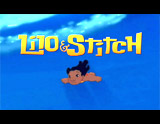
|
Lilo & Stitch (2002)
|
- a very successful animation -- the 14th highest-grossing
(domestic) film of 2002, at $145.8 million, with $273.1 million
(worldwide); with a production budget of $80 million
- with one Academy Award nomination: Best Animated
Feature Film, losing to Studio Ghibli's anime Spirited Away
(2001, Jp.)
- the plot was set on Kauai, and told about two
orphaned sisters, Nani (Tia Carrere) and younger Lilo Pelekai
(Daveigh Chase); Lilo befriended an alien creation of mad scientist
Dr. Jumba Jookiba (David Ogden Stiers), a lifeform known as
Experiment 626, renamed as Stitch
- followed by direct-to-video Stitch! The Movie
(2003) and Lilo & Stitch
2: Stitch Has a Glitch (2005)
|
|
43
|

|
Treasure Planet (2002)
|
- based upon Robert Louis Stevenson's 1883 novel Treasure
Island, although set in space as a sci-fi adventure;
the story was about teenaged Jim Hawkins' quest for the treasure
of fabled Space Pirate Captain Flint, voyaging on the Legacy accompanied
by absent-minded Dr. Delbert Doppler (an anthropomorphic
dog)
- it was the first film to be released simultaneously
in regular and IMAX theaters
- with one Academy Award nomination: Best Animated
Feature Film, losing to Studio Ghibli's anime Spirited Away
(2001, Jp.)
- the 69th highest-grossing (domestic) film of
2002, far behind Lilo & Stitch, at only $38.2 million,
and $109.6 million (worldwide), with a production budget of
$140 million - a major box-office failure
|
|
44
|

|
Brother Bear (2003)
|
- the second-to-last traditionally animated theatrical film produced
by Disney, until The Princess and the Frog (2009)
- the story was about the coming-of-age of an
ancient Alaskan wilderness dweller named Kenai, whose totem
or "spirit animal" that
he given was "The Bear of Love"; after an act of
murderous vengeance, Kenai was transformed into a bear, and
was forced to go on a quest to restore himself
- the 34th highest-grossing (domestic) film of
2003 with $85.3 million, and $250.4 million (worldwide)
- with one Academy Award nomination: Best Animated
Feature Film, losing to Finding Nemo (2003)
- with a sequel Brother Bear 2 (2006)
|
|
45
|

|
Home on the Range (2004)
|
- the last traditionally-animated, 2-D theatrical
film produced by Disney, until 2009
- the story was about three heroine dairy cows
Maggie (Roseanne Barr), Mrs. Calloway (Judi Dench), and Grace
(Jennifer Tilly), living at a farm known as "Patch of Heaven"
- when threatened with foreclosure, the trio were forced to
capture cattle rustler Alameda Slim (Randy Quaid) to collect
a bounty to save their idyllic home
- this was the last Disney film to use the CAPS digital ink-and-paint
system in use since 1989
- it was a major box-office bomb (the 65th highest
grossing film of the year), with a production budget of $110
million, and poor revenues; with $50 million (domestic) and
only $104 million (worldwide)
|
|
46
|

|
Chicken Little (2005)
|
- it was Disney's first film to be completely produced
via computer animation (CGI), and Disney's first CG film not created-produced
by partner Pixar; it was released in 3-D (Disney's first film
to be released in this format)
- also, this was Disney's second single-story
animated feature film (after Robin Hood (1973)) to
use anthropomorphic characters
- it was loosely based on the fable about Henny
Penny (Chicken Little) who falsely and hysterically cried out
"The Sky Is Falling!"; the characters included young nerdy
male rooster Chicken Little (Zach Braff), his widowed father
Buck Cluck (Garry Marshall), his bucktoothed best friend -
an ugly often-teased duck named Abby Mallard (Joan Cusack),
a cowardly, anxious morbidly obese pig known as Runt of the
Litter (Steve Zahn), a scuba-helmeted goldfish known as Fish
Out of Water (Dan Molina), and mean female tomboy-bully Foxy
Loxy (Amy Sedaris)
- an expensive film, with a production budget
of $150 million, and somewhat successful; the 14th highest-grossing
(domestic) film of 2005, with $135.4 million, and $314.4 million
(worldwide)
|
|
47
|

|
Meet the Robinsons (2007)
|
- loosely based on William Joyce's 1990 picture
book A
Day With Wilbur Robinson
- the story told about 12-year old orphan/child
inventor-prodigy Lewis, who journeyed 30 years into the future
in a time machine to find a family, he was joined by fast-talking
13 year-old friend Wilbur Robinson to pursue man-child Bowler
Hat Guy and his evil robotic bowler hat Doris (DOR-15), and
acquire Grandfather Robinson's missing false teeth
- the 29th highest-grossing (domestic) film of
the year, with $97.8 million, and $169.3 million (worldwide),
but with a estimated production budget of $150 million
|
|
48
|

|
Bolt (2008)
|
- in the story (similar to the premise of The
Truman Show (1998)), genetically-altered, super-powered
white shepherd dog Bolt (John Travolta) had spent his entire
life on a TV set; when 'human' Penny (Miley Cyrus) was kidnapped
off the set, Bolt escaped from his on-set Hollywood trailer
for a rescue mission to fight against evil
mad scientist Dr. Calico (Malcolm McDowell), with help from
female alleycat Mittens (Susie Essman) and hamster Rhino (Mark
Walton)
- one of the first films in Disney's so-called
"Revival"
- it was the first computer-animated feature
film to use non-photorealistic rendering
- moderately successful as the 22nd highest-grossing
(domestic) film of the year, with $114 million (domestic),
and $310 million (worldwide); and with a production budget
of $150 million
- an Academy Award nominee for Best Animated Feature
Film, won by Wall-E (2008)
|
|
49
|

|
The Princess and the Frog (2009)
|
- based upon E.D. Baker's 2002 children's novel
The Frog Princess, a version of the classic fable, The Frog
Prince
- the 32nd highest-grossing (domestic) film of
the year, with $104.4 million, and $267 million
(worldwide), and with a production budget of $105 million
- it was notable as Disney's first implementation
of a black title character - an African-American princess
named Tiana (voice of Anika Noni Rose); the setting was 1920s
New Orleans
- the first Disney animated feature film since Home
on the Range (2004) to be traditionally animated
- a three-time Academy Award nominee: Best Original
Song (Almost There), Best Original Song (Down in
New Orleans),
and Best Animated Feature Film, won by Up (2009)
|
DreamWorks also released its second feature-length animated film The Road
to El Dorado (2000) (loosely based on The Man Who Would Be King (1975)),
and Fox produced the visually-striking science fiction epic Titan A.E.
(2000) combining classic animation and CGI (before closing down its traditional
animation division).
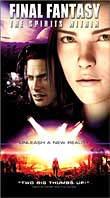 The
second collaboration of DreamWorks and PDI was for the immensely successful
(the box-office champ of 2001 and the first Best Animated Feature Film
Oscar winner) and colorful fairy-tale farce Shrek (2001), a computer-animated
film that added elements to CGI such as fire, liquids, digital humans, and
clothing, and featured a green, swamp-living, misfit ogre (with voice of Mike
Myers). The most talked-about (but commercially unsuccessful) computer-animated
film of the early 21st century, however, was Sony's Final Fantasy: The
Spirits Within (2001), a photo-realistic (hyperReal), science-fiction
tale by director Hironobu Sakaguchi (creator of the interactive, role-playing,
futuristic video game) that advertised itself as "Fantasy Becomes Reality."
It simulated human actors with CG and was the first computer-generated feature
film based entirely on original designs - no real locations, people, vehicles,
or props were used. The
second collaboration of DreamWorks and PDI was for the immensely successful
(the box-office champ of 2001 and the first Best Animated Feature Film
Oscar winner) and colorful fairy-tale farce Shrek (2001), a computer-animated
film that added elements to CGI such as fire, liquids, digital humans, and
clothing, and featured a green, swamp-living, misfit ogre (with voice of Mike
Myers). The most talked-about (but commercially unsuccessful) computer-animated
film of the early 21st century, however, was Sony's Final Fantasy: The
Spirits Within (2001), a photo-realistic (hyperReal), science-fiction
tale by director Hironobu Sakaguchi (creator of the interactive, role-playing,
futuristic video game) that advertised itself as "Fantasy Becomes Reality."
It simulated human actors with CG and was the first computer-generated feature
film based entirely on original designs - no real locations, people, vehicles,
or props were used.
Kaena: The Prophecy (2004), the first full-length
3D-generated animated film from France, with voices of Kirsten Dunst, Richard
Harris, and Anjelica Huston, told a sci-fi fantasy tale about a free-spirited
teenaged girl who must solve the mystery of a dying 100-mile tall tree. Writer/director
Kerry Conran's feature film debut, the retro-futuristic sci-fi adventure film
set in the late-1930s Sky Captain and the World of Tomorrow (2004) was the first live-action studio release in which every scene was at
least partly computer-generated - supplemented with human actors (including
Jude Law and Gwyneth Paltrow). The entire special-effects laden movie was
shot against blue/green screens with human actors in front.
Similar in sheer creative inventiveness was the ground-breaking Waking
Life (2001), an impressionistic and stylized R-rated film from
director Richard Linklater - it was first digitally shot as a
live-action film before 30 artists graphically 'painted' the characters
via computer (with a process called "interpolated rotoscoping")
to create the illusion of a cartoon in motion. [Note: Similarly, Sin
City (2005) and Linklater's
own A Scanner Darkly (2005) digitally rotoscoped live action.]
Also, Paramount's Nickelodeon films introduced a totally-original
computer-animated feature starring a whiz kid who saves his alien-kidnapped
parents, titled Jimmy Neutron: Boy Genius (2001). And Warner
Bros.' poorly-received summer release, Osmosis Jones (2001),
with part live-action and part-animation, was about a white blood
cell cop (voice of Chris Rock) who hunted down lethal germs in a zoo-worker's
(Bill Murray) body.
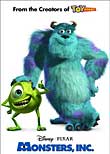 The
widely-anticipated Monsters, Inc. (2001), Disney's fourth computer-animated
comedy with Pixar, featured a one-eyed, lime-colored ball named
Mike Wazowski (with voice of Billy Crystal), and his scare-factory
buddy James P. "Sulley"
Sullivan (voice of John Goodman). As of 2013, it was the seventh-highest
grossing animation of all-time. The
widely-anticipated Monsters, Inc. (2001), Disney's fourth computer-animated
comedy with Pixar, featured a one-eyed, lime-colored ball named
Mike Wazowski (with voice of Billy Crystal), and his scare-factory
buddy James P. "Sulley"
Sullivan (voice of John Goodman). As of 2013, it was the seventh-highest
grossing animation of all-time.
20th Century Fox's animation-adventure Ice Age (2002) starred
creatures that are trying to reunite a human baby with its parents.
The computer-generated characters include Manny - a woolly mammoth
(voice of Ray Romano), Sid - a talkative sloth (voice of John Leguizamo),
Diego - a saber-toothed tiger (voice of Denis Leary), along with
Scrat - a prehistoric squirrel that desperately tries to stash an
acorn. [Note: It was followed by a sequel Ice Age 2: The Meltdown
(2006).]
The second film from the same team was Robots (2005), a slapstick,
science-fiction animated film about clunky, nuts-and-bolts androids
featuring Robin Williams (his first voice in an animated feature
since 1992) as the voice of Fender.
Due to pressures brought to bear on the Academy of Motion
Picture Arts and Sciences, the reknowned organization finally acknowledged
that full-length cartoons (animations!) deserve their own Oscar awards category,
Best Animated Feature Film, beginning with films eligible in the year 2001.
According to the Academy's rules, an 'animated film' must be at least 70 minutes
in length, have a significant amount of major animated characters, and be
at least 75% animated. The first animated feature film to win the Oscar in the new category was DreamWorks SKG' revisionistic Shrek (2001). It counteracted the traditional Disney animation formula for a fairy tale with its main character - an ugly, greenish ogre (voice of Mike Myers) who saved pouty, fiercely independent Princess Fiona (voice of Cameron Diaz) from a female, purple fire-breathing dragon, with a pop music soundtrack (featuring songs by Joan Jett, Smash Mouth, and others).
The wildly-successful Finding Nemo
(2003) - Pixar's
and Disney's fifth collaboration, won the Oscar for Best Animated Feature Film!
The undisputed box-office champ of its year, it was the tale of Marlin - a
widowed clown fish's (voice by Albert Brooks) search in the Pacific Ocean,
with a dopey and forgetful blue tang fish named Dory (voice by Ellen DeGeneres),
for missing son Nemo with a withered fin. [It faced stiff competition from
the wildly inventive and surreal French animated film The Triplets of Belleville
(2003).] DreamWorks' version of Finding Nemo with an underwater
gangster theme, the studio's first CGI-animated film, was the
successful Shark Tale (2004), with voices provided by Will Smith, Renee
Zellweger, Jack Black, Robert DeNiro and Angelina Jolie.
Director/screenwriter Brad Bird's ingenious Oscar-winning
Best Animated Feature, the action-adventure The Incredibles (2004),
Disney's and Pixar's sixth collaboration, was Pixar's first PG-rated film and the longest CG animated film to date (at 115 minutes). It
told the tale of paunchy Bob "Mr. Incredible" Parr (voice of Craig
T. Nelson), an ex-do-good Superhero suffering a mid-life crisis and living
under-cover in suburbia, with his restless wife Helen (voice of Holly Hunter)
- former rubber-limbed masked vigilante Elastigirl. Their children included
long-haired daughter Violet (voice of Sarah Vowell) - capable of being invisible,
son Dash (voice of Spencer Fox) - who could travel at supersonic speed, and
baby Jack-Jack. The entire family was lured back into super-herodom against
the evil Syndrome (voice of Jason Lee). With its four Oscar nominations (including
Best Animated Feature Film), it was the most-nominated animated film since Aladdin (1992) (with five nominations).
Summary: Disney's Animated Collaborations with Pixar
In early 2006, the Walt Disney Co. bought longtime
partner Pixar Animation Studios Inc. for $7.4 billion in stock, after
a twelve year relationship in which Disney co-financed and distributed
Pixar's animated films and split the profits (their previous deal
expired in June 2006 after Pixar's delivery of Cars (2006)).
In summary, Disney's run of successful animations with
Pixar are provided below. Their first five feature films grossed
more than $2.5 billion (worldwide), giving Pixar the highest per
film average gross of any production company at the time.
See detailed chart here: The Pixar-Disney
Animations
The Pixar-Disney Animated Films
(chronological)
|
|
Disney-Pixar Collaborations
|
Millions of Dollars of Box-Office Gross (domestic)
|
Millions of Dollars of Box-Office Gross (worldwide)
|
Academy Awards
|
| 1. Toy Story (1995) |
$192
|
$373.5
|
Nominated for three Academy Awards without a
win
|
| 2. A Bug's Life (1998) |
$163
|
$363
|
Nominated for one Academy Award without a win
|
| 3. Toy Story 2 (1999) |
$246
|
$497
|
Nominated for one Academy Award without a win
|
The Animated Feature Film Oscar Category
First awarded in 2002 (for films released in 2001)
|
| 4. Monsters, Inc. (2001) |
$256
|
$577.4
|
Nominated for four Academy Awards (Best Original
Music Score, Best Animated Feature Film, Best Sound Editing)
with one win: Best Original Song
|
| 5. Finding Nemo (2003) |
$340
|
$940.3
|
Nominated for four Academy Awards (Best Original
Screenplay, Best Original Music Score, Best Sound Editing)
with one win:
Best Animated Feature Film
|
| 6. The Incredibles (2004) |
$261.4
|
$633
|
Nominated for four Academy Awards (Best Original
Screenplay, Best Sound Mixing) with two wins:
Best Animated Feature Film and
Best Sound Editing
|
| 7. Cars (2006) |
$244
|
$462
|
Nominated for two Academy Awards (Best Animated
Feature Film and Best Original Song) with no wins
|
| 8. Ratatouille (2007) |
$206.4
|
$620.7
|
Nominated for five Academy Awards (Best Original
Screenplay, Best Original Music Score, Best Sound Mixing, Best
Sound Editing) with one win: Best
Animated Feature Film
|
| 9. WALL•E (2008) |
$224
|
$533.3
|
Nominated for six Academy Awards (Best Original
Screenplay, Best Original Music Score, Best Original Song,
Best Sound Mixing, Best Sound Editing) with one win:
Best Animated Feature Film
|
| 10. Up (2009) |
$293
|
$735
|
Nominated for five Academy Awards (Best Picture,
Best Original Screenplay, Best Sound Editing) with two wins:
Best Animated Feature Film, and
Best Original Score
|
| 11. Toy Story 3 (2010) |
$415
|
$1.067 billion
|
Nominated for five Academy Awards (Best Picture,
Best Sound Editing, Best Adapted Screenplay) with two wins,
Best Animated Feature Film, and Best Original Song
|
| 12. Cars 2 (2011) |
$191.4
|
$562.1
|
Not nominated in the Best Animated Feature
Film category, breaking Pixar's streak
|
| 13. Brave (2012) |
$237.3
|
$540.4
|
Nominated for one Academy Award, with one win:
Best Animated Feature Film
|
| 14. Monsters University (2013) (aka
M.U.) |
$268.5
|
$744.2
|
Not nominated in the Best Animated Feature
Film category
|
| 15. Inside Out (2015) |
$356.5
|
$857.6
|
Nominated for two Academy Awards (Best Original
Screenplay) with one win, Best
Animated Feature Film
|
| 16. The Good Dinosaur (2015) |
$123
|
$332.2
|
Not nominated in the Best Animated Feature Film category
|
| 17. Finding Dory (2016) |
$486
|
$1.029 billion
|
Not nominated in the Best Animated Feature
Film category
|
| 18. Cars 3 (2017) |
$152.9
|
$383.6
|
Not nominated in the Best Animated Feature Film category
|
| 19. Coco (2017) |
$209.7
|
$807
|
Nominated for two Academy Awards with two wins, Best
Animated Feature Film and Best Original Score
|
| 20. Incredibles 2 (2018) |
$608.6
|
$1.24 billion
|
Nominated for one Academy Award (Best Animated Feature Film)
with no wins
|
| 21. Toy Story 4 (2019) |
$434
|
$1.073 billion
|
Nominated for two Academy Awards with one win,
Best Animated Feature Film, also nominated for Best
Original Song
|
| 22. Onward (2020) |
$61.5
|
$141.9
|
|
| 23. Soul (2020) |
TBD
|
TBD
|
|
Pixar's CGI marvel, the adventure
comedy Cars
(2006), directed by John Lasseter, told an anthropomorphic
story about a stock-car (Lightning McQueen, voice of Owen Wilson)
on a journey to the races - including nostalgia for Route 66 in
a forgotten town called Radiator Springs.
Pixar has released 19 films from 2001 to 2017
that have been eligible for the Animated Feature Film Oscar award.
Of them, only five have failed to garner a nomination - both a sequel
and a prequel: Cars
2 (2011) and Monsters
University (2013), the The Good Dinosaur (2015), Finding
Dory (2016), and Cars 3 (2017). Pixar/Disney's
The Good Dinosaur (2015) marked the first time that Pixar released
two feature films in the same year. Its earlier 2015 film was the massive
Oscar-winning hit Inside Out (2015).
Finding Dory (2016) broke records on
its opening weekend - it was the most successful and highest-grossing
animated feature film debut (in its opening weekend) of all-time at
$135.1 million, unseating Shrek
the Third (2007), at $121.6 million (domestic). [Note: Until
now, Toy
Story 3 (2010) was Pixar's biggest opening ever, with $110.3
million.] Monsters
University (2013), a prequel, was the 14th straight No. 1
debuting film in Pixar's 18-year history. It also had the
second-highest opening ever for the Northern California-based
company at $82 million, behind the $110.3 million launch of Toy
Story 3 (2010).
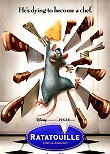 The
first 21 feature films, through Toy Story 4 (2019), have garnered
46 Academy Awards® nominations, 16 competitive Oscar® wins
(does not include John Lasseter's Special Achievement Award for Toy
Story (1995)), and numerous other accolades. The first 21 animated
films have raked in approx. $5.9+ billion (domestic) and over $14+
billion (worldwide) in revenue. The
first 21 feature films, through Toy Story 4 (2019), have garnered
46 Academy Awards® nominations, 16 competitive Oscar® wins
(does not include John Lasseter's Special Achievement Award for Toy
Story (1995)), and numerous other accolades. The first 21 animated
films have raked in approx. $5.9+ billion (domestic) and over $14+
billion (worldwide) in revenue.
As of 2019, ten
of Pixar-Disney's films have won the Academy Award for Best Animated
Feature Film (since the category was established in 2001): the 5th,
6th, 8th, 9th, 10th, 11th, 13th, 15th, 19th and 21st films. Two
of the films were also nominated for the Academy Award
for Best Picture (Up (2009) and Toy
Story 3 (2010)):
- Finding Nemo (2003)
- The Incredibles (2004)
- Ratatouille (2007) by writer/co-director
Brad Bird, was a fable about a rat named Rémy (voice of
Patton Oswalt) who lived in a Paris bistro-restaurant and had
aspirations to be a chef.
- WALL•E (2008) was about a waste-removal
robot named WALL•E (meaning Waste Allocation Load Lifter Earth-Class) who in the year 2700 discovered the key to planet Earth's future after it was vacated and he was the last robot on Earth doing cleanup. When WALL•E
met up with a cold-hearted female search robot named EVE from a
space probe and fell in love with her, he chased her across outer
space. Best Animated Feature Film-winning WALL-E's six nominations tied it with Beauty and the Beast (1991) as the most-nominated animated film.
- Up (2009), a CGI-animated film, was a coming-of-old-age tale. It told about a 70s year-old hero, cantankerous, bitter widower Carl Fredricksen (voice of Edward Asner) who launched his house into the air using hundreds of helium balloons to travel to South America, while slowly befriending an accidental stowaway Boy Scout named Russell -- it was the first animated film to get a Best Picture nomination since animated films received their own category in 2001.
- Toy Story 3 (2010)
- Brave (2012)
- Inside Out (2015)
- Coco (2017) - This
Oscar win for Best Animated Feature Film marked Disney’s
sixth straight victory in the category (for films that were nominated).
It was the first Animated Feature Film winner with a Latino protagonist.
- Toy Story 4 (2019)
Developments for Walt Disney Studios Animation:
The Marvel-Disney film Big Hero 6 (2014), inspired
by a Marvel comic, earned the Walt Disney Animation Studio's seventh Oscar
for Best Animated Film. It marked Marvel's first major win
at the Academy Awards, and Walt Disney Animation Studio's second victory
(in a row) in the animation category since its previous year's win
for Frozen (2013).
Walt Disney Animation Studio Feature Films (1937-present)
The Decade of the 2010s
|
| No. |
Title Screen |
Title (Year) |
Notables |
|
50
|

|
Tangled (2010)
|
- the story was based upon the classic fairy tale
from Brothers Grimm of a long-haired girl named Rapunzel, who
was imprisoned in a tall castle by a witch; the only entry
into the castle was by her lengthy hair draped down, signaled
when the witch called out: "Rapunzel,
Rapunzel, let down your hair"; the witch attempted to
thwart Rapunzel's growing love for a prince
- the film adopted a straight-forward narrative
(without Shrek-style humor), and took six years to develop,
with an exorbitant production budget of $260 million - making
it at the time the most expensive animated film ever made
- the 14th highest-grossing (domestic) film of
the year, with $200.8 million, and $591.8 million (worldwide)
- the film blended CGI and traditional hand-drawn
animation with non-photorealistic rendering
- its original title Rapunzel, was changed
to Tangled, to increase
market share by implying that it was gender-neutral
- the film introduced Disney's first CGI Princess
(the next was Merida in Disney/Pixar's Brave (2012))
- an Academy Award nominee, for Best Original
Song (I See the Light)
- followed by the CGI sequel short, Tangled Ever
After (2012)
|
|
51
|

|
Winnie the Pooh (2011)
|
- inspired by the 1926 A.A. Milne stories - and
based upon three previously-unadapted Pooh stories
- a direct sequel to Disney's earlier The Many Adventures of
Winnie the Pooh (1977)
- reportedly, the last Disney film to be
made using traditional animation techniques (the last film traditionally
animated in the series was Home on the Range (2004))
- most of Disney's revenue from the Pooh Franchise
has been from merchandise
- the 109th highest-grossing (domestic) film of
the year at $26.7 million, and $49.9 million (worldwide),
and with a production budget of $30 million; very poor box-office
revenues
|
|
52
|

|
Wreck-It Ralph (2012)
|
- in the story, arcade game center inhabitant
"Wreck-It Ralph" (John C. Reilly) was fed up with being labeled
a 'bad-guy' in a 1980s 8-bit video game titled Fix-It Felix
Jr. that
glorified its hero: Felix (Jack McBrayer); he rebelled
and dreamt of being a hero within another sci-fi Hero's
Duty game that featured a hero named Sergeant Calhoun (Jane
Lynch); his rogue efforts caused a Cy-Bug enemy to take over
another of the arcade's racing games, Sugar Rush, where
he met and assisted a "glitch" racer named
Vanellope Von Schweetz (Sarah Silverman)
- a CGI-animated film
- a very successful film: the 13th highest-grossing
(domestic) film of the year, with $189.4 million, and $471.2
million (worldwide), with a production budget of $165 million
- one-time Academy Award nominee: Best Animated
Feature Film, losing to Brave (2012)
|
|
53
|

|
Frozen (2013)
|
- inspired by Hans Christian
Andersen's original lengthy 1845 fairy tale The
Snow Queen; this Disney animation was the second instance
of using an Andersen fairy tale as the basis of a full-length
feature film (the first was The Little Mermaid (1989))
- in the story, fearless Princess Anna (Kristen
Bell) journeyed with rugged iceman Kristoff (Jonathan Groff),
his loyal pet reindeer Sven, and a naïve singing
snowman Olaf (Josh Gad) to find her estranged
sister Queen Elsa (Idina Menzel); her quest was also to end
the eternal frozen winter of their kingdom of Arendelle unwittingly
unleashed by Queen Elsa after her coronation
- it was the 6th highest-grossing (domestic)
film of the year at $400.7 million, and $1.28 billion (worldwide),
with a production budget of $150 million
- at the time, it was the highest-grossing (worldwide) animated
feature film of all time
- at the time, it was the highest-earning (domestic)
film with a female director until surpassed
by Warner Bros.' Wonder Woman (2017)
- created as a 3D CGI animation, and considered
one of the strongest and best of Disney's animated releases
since the year 2000
- a two-time Academy Award Oscar winner: Best
Original Song (Let It Go), and Best Animated Feature
Film
|
|
54
|
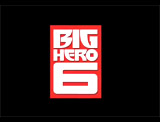
|
Big Hero 6 (2014)
|
- this was Disney's first animated film featuring
Marvel Comic's superhero characters; it was inspired by Marvel's
superhero comic book series of the same name
- created as a 3D CGI animation
- the story was set in the futuristic fictional
city of San Fransokyo, where two young robotics prodigies lived:
brothers Hiro (Ryan Potter) and Tadashi Hamada (Daniel Henney);
when a crisis instigated by mysterious, Kabuki-masked criminal
(later revealed to be San Fransokyo Institute of Technology
robotics teacher Professor Robert Callaghan (James Cromwell)
- also known as Yokai) threatened the city, Hiro formed a superhero
team (with his deceased older brother's four best friends)
to combat the villain with Tadashi's upgraded and modified
Baymax (Scott Adsit) fighting and flying robotic machine
- it was the 9th highest-grossing (domestic)
film of the year at $222.5 million, and $657.8 million
(worldwide), and with a production budget of $165 million
- an Academy Award winner (its sole nomination):
Best Animated Feature Film
|
|
55
|
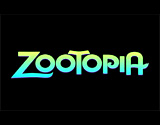
|
Zootopia (2016)
|
- this was Disney's third single-story animated feature film
(after Robin Hood (1973) and Chicken Little (2005)) to use anthropomorphic
characters
- the film was set in the city of Zootopia, where
cheerful and idealistic bunny rabbit Judy Hopps (Ginnifer Goodwin)
had taken a job as a police officer; she crossed paths with
fast-talking con-man Nick Wilde (Jason Bateman), a wily red
fox - an unlikely partner who helped her solve a missing-persons
case; together, they also had to face a threatening conspiracy
of savage predatory mammals
- a highly-successful film - the 7th highest-grossing
(domestic) film of the year at $341.3 million, and $1.024 billion
(worldwide), with an estimated budget of $150 million; it was
Disney's highest-grossing (domestic) film since Frozen (2013)
- at the time, it became the sixth animated feature
film of all-time to pass $1 billion (worldwide), following Frozen
(2013), Minions (2015), Toy Story 3 (2010), Despicable Me 3
(2017), and Finding Dory (2016)
- an Academy Award winner: Best Animated Feature
Film - this marked the 3rd film in Disney's series of Animated
Feature Films to win the Oscar, after Frozen (2013) and Big
Hero 6 (2014); it was competing in the category against
another Disney film, Moana (2016)
|
|
56
|
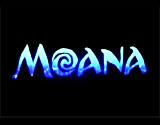
|
Moana (2016)
|
- the feature animation's story was set in the Polynesian
islands of the South Pacific
- it was significant for featuring a title character
who was Polynesian (the second after Lilo in Lilo & Stitch
(2002)); she was also the first Polynesian Disney Princess
- conventionally animated with CGI
- the story revolved around young, 16 year-old
strong-willed future chieftess, Princess Moana Waialiki (Auli’i
Cravalho) on
the island of Motunui, who embarked on an adventure across
the ocean seas to repossess the stolen
heart of her island's benevolent creator goddess named Te Fiti,
with assistance from the legendary, dark,
shape-shifting demi-god Maui (Dwayne Johnson)
- the 13th highest-grossing (domestic) film of
the year at $248.8 million, and $690.8 million (worldwide),
with an estimated production budget of $150 million
- with two Academy Award nominations: Best Animated
Feature Film (competing against Disney's own Zootopia (2016) that
won), and Best Original Song (How Far I'll Go)
|
|
57
|

|
Ralph Breaks the Internet (2018)
|
- sequel to the earlier Wreck-It-Ralph (2012)
- the first sequel from the studio since
Fantasia 2000 (1999)
- with one Academy Award nomination: Best Animated
Feature Film (lost in competition against Spider-Man: Into
the Spider-Verse (2018))
|
| 58 |

|
Frozen II (2019)
|
- sequel to the earlier Frozen (2013),
and set three years later
- the highest-grossing Disney Animated Studio
Film of all-time, at $466.9 million (domestic), and the second-highest
grossing (worldwide) behind The Lion King (2019) at
$1.406 billion
|
The Present State of Animated Films:
Robert Zemekis directed The Polar Express (2004), a film that further developed motion capture technology. It was marked by the first innovative use of the
process of 'Performance Capture' -- an advanced motion capture system by which an
actor’s live performances were digitally captured by computerized
cameras, and became a human blueprint for creating virtual, all-digital
characters. This allowed actor Tom Hanks to play many very different characters (the
boy, the father, the conductor, the hobo, and Santa Claus) in the same
film. Zemeckis went even further with this technique in his later films (either produced or directed) including the haunted house film Monster House (2006), and the modern adaptation of the epic poem Beowulf (2007). As advances were made in the technique, it was clear that it would become more widespread and sophisticated as a special effects technique in the 2000s and into the future.
 One of the few big-budget cel-animated films being released
in the crowd of CGI films was the adaptation of Margret and H.A. Rey's classic
children's book series titled Curious George (2006), starring the inquisitive
monkey named George and Will Ferrell as the kind Man in the Yellow Hat who
transported the orphaned George from Africa to America for a series of misadventures.
George Miller (known for Babe (1995)) directed Happy Feet (2006) - the best Animated Feature Oscar-winning CGI-animated song-and-dance musical.
It told about a group of Antarctic Emperor Penguins (created by CGI) who prided
themselves on each having a "heartsong" to attract a mate. One young
and unique penguin, named Mumble (voice of Elijah Wood) - the son of Elvis-like
Memphis (voice of Hugh Jackman) and breathy Norma Jean (voice of Nicole Kidman),
was considered an outsider because he couldn't sing but his real talent was
tap-dancing. One of the few big-budget cel-animated films being released
in the crowd of CGI films was the adaptation of Margret and H.A. Rey's classic
children's book series titled Curious George (2006), starring the inquisitive
monkey named George and Will Ferrell as the kind Man in the Yellow Hat who
transported the orphaned George from Africa to America for a series of misadventures.
George Miller (known for Babe (1995)) directed Happy Feet (2006) - the best Animated Feature Oscar-winning CGI-animated song-and-dance musical.
It told about a group of Antarctic Emperor Penguins (created by CGI) who prided
themselves on each having a "heartsong" to attract a mate. One young
and unique penguin, named Mumble (voice of Elijah Wood) - the son of Elvis-like
Memphis (voice of Hugh Jackman) and breathy Norma Jean (voice of Nicole Kidman),
was considered an outsider because he couldn't sing but his real talent was
tap-dancing.
DreamWorks' Shrek Installments:
Sequels were inevitable for the most successful animations,
so DreamWorks' Shrek 2 (2004) appeared,
with its original character-voices including Mike Myers (as green
ogre Shrek), Cameron Diaz (as Fiona), and Eddie Murphy (as wise-cracking
Donkey). The fairy tale couple returned from their honeymoon to
find the bride's family in the land of Far, Far Away - Shrek's
in-laws King Harold (John Cleese) and Queen (Julie Andrews), who
are unhappy with her decision to marry an ogre. Additional characters
included talk-show host Larry King as the voice of Fiona's Ugly
Stepsister, Rupert Everett as foppish Prince Charming, Antonio Banderas
as Zorro-style assassin Puss-in-Boots, and Jennifer Saunders as
a plotting fairy godmother. [The third installment was Shrek
the Third (2007), which brought back the entire cast from
the second film, as well as adding additional stars, while the
fourth installment Shrek Forever
After (2010) took
Shrek, suffering from a mid-life crisis and family life, to an alternate
universe after signing a magical contract with Rumpelstiltskin.
where the trickster reigned with witches. Shrek had only one day
to receive
"true love's kiss" from Fiona, a hefty Brunhilde-like
leader of the Ogre Resistance.]
DreamWorks' Shrek Films
(chronological)
|
|
Title Screen
|
Films
|
Millions of Dollars of Box-Office Gross
(domestic)
|
Millions of Dollars of Box-Office Gross
(worldwide)
|
Domestic Notables
(as of the end of 2017)
|

|
Shrek (2001)
|
$267.6
|
$484.4
|
17th highest-grossing animation of all-time; PG-rated
|
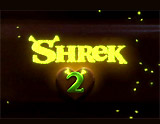
|
Shrek 2 (2004)
|
$441
|
$919.8
|
2nd highest-grossing animation of all-time; PG-rated
|

|
Shrek the Third (2007)
|
$322.7
|
$799
|
12th highest-grossing animation of all-time; PG-rated
|

|
Shrek Forever After (2010)
|
$238.7
|
$752.6
|
25th highest-grossing animation of all-time; PG-rated
|
Dreamworks/PDI would revisit the insect world, with Bee
Movie (2007), about a bee named Barry B. Benson (voice of comedian Jerry
Seinfeld) who had a forbidden friendship with a New York City florist named
Vanessa (voice of Renée Zellweger), with an all-star cast including
Alan Arkin, Kathy Bates, Matthew Broderick, John Goodman, Larry King, William
H. Macy, and Oprah Winfrey, among others. The Oscar-nominated, dark, autobiographical black and white 2-D animated film Persepolis (2007, Iran/Fr./Us) based on her best-selling graphic novels, illustrated how political repression during the 1979 Islamic Revolution in Iran extended deeply into the life of the coming-of-age main female character, Marjane (or Marji) Satrapi (voice of Chiara Mastroianni), through various anecdotes.
With original storylines drying up, syndicated comic strip
characters, such as the lazy, wise-cracking orange feline named Garfield (voice
of Bill Murray), became an animated star in the live action/CGI hybrid film Garfield: The Movie (2004). The wacky and fast-paced, primitively-animated
film The SpongeBob SquarePants Movie (2004), with its main character
-- a yellow man-made sea sponge with legs and a red tie -- was a spin-off
from the long-running Nickelodeon TV cartoon show. Another effort from
the DreamWorks animation team (and released by Paramount), PG-rated Over
the Hedge (2006), was a loose adaptation of a popular newspaper comic
strip of the same name. It told the story of a group of wildlife forest animals,
led by a turtle named Verne (Garry Shandling) and mischievous raccoon RJ (voiced
by Bruce Willis), who felt the effects of encroaching human beings. It became
the tenth highest grossing film of 2006, with the possibility of a sequel,
but was overlooked for the Best Animated Feature Oscar.
Waltz with Bashir (2008) was the first animated film to be nominated in the Best Foreign Film Oscar category. Functioning partially as an oral-history documentary, the introspective, dream-like anti-war polemic was a confessional account of director Ari Folman's devastating and traumatic experience as a young Israeli soldier during his country's 1982 invasion of Lebanon, and its massacre of Palestinian refugees. It took two years to animate, and was done by a team of artists who combined hand-drawing with the latest technology - resulting in thick-lined, near-monochromatic animated images frequently seen in strange yellowish light. The animators based their drawings on staged and videotaped interviews, although the end result looked similar in some ways to the rotoscope technique used in Linklater's film Waking Life (2001).
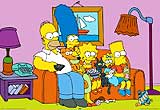 The
longest-running, prime-time television cartoon series was The Simpsons - it premiered in December 1989 on the FOX channel. The iconic, culturally-significant
animated show was created by Life in Hell cartoonist Matt Groening.
An offshoot was their first feature length film, The Simpsons Movie (2007),
starring the yellow-skinned, irreverent and misfit family featuring oafish
father and nuclear plant manager Homer (voice of Dan Castellaneta), worrywart
gravel-voiced, blue-haired mother Marge (voice of Julie Kavner), 10-year-old
mischievous, troublemaker son Bart (voice of Nancy Cartwright), 8-year-old
ecologically-minded, overachieving vegetarian Buddhist sister Lisa (voice
of Yeardley Smith), and pacifier-sucking toddler Maggie. The
longest-running, prime-time television cartoon series was The Simpsons - it premiered in December 1989 on the FOX channel. The iconic, culturally-significant
animated show was created by Life in Hell cartoonist Matt Groening.
An offshoot was their first feature length film, The Simpsons Movie (2007),
starring the yellow-skinned, irreverent and misfit family featuring oafish
father and nuclear plant manager Homer (voice of Dan Castellaneta), worrywart
gravel-voiced, blue-haired mother Marge (voice of Julie Kavner), 10-year-old
mischievous, troublemaker son Bart (voice of Nancy Cartwright), 8-year-old
ecologically-minded, overachieving vegetarian Buddhist sister Lisa (voice
of Yeardley Smith), and pacifier-sucking toddler Maggie.
Groening was also responsible for the science-fiction spoof Futurama that first aired in 1999 - a highly popular but less successful series set in the next millennium, starring "Generation-X" slacker Phillip J. Fry (voice of Billy West) - a 20th century NY pizza delivery boy who was cryogenically frozen by accident for 1,000 years, and woke up in a retro-futuristic world. It too was adapted into a feature-length film, Futurama: Bender's Big Score (2007), the first of a planned four films.
The Ultimate 3-D:
The decade of the 2000s saw advancements in 3D and an explosion of releases of both 3-D films and IMAX films. There were many varieties of 3-D, including Disney Digital 3D, Real D 3D, InTru3D, D-BOX, and IMAX 3D. And with many more theatres converted to the 3D format, that meant increased demand and bookings (and ticket prices) for 3D films. Would 3D be the future of filmmaking, a logical extension of CGI?
Disney's and Robert Zemeckis' Beowulf (2007) was released simultaneously in standard 2-D and non-Imax 3D versions and had the biggest 3-D rollout of any film in history (to date). Disney's and Zemeckis' 3-D A Christmas Carol (2009) was an adaptation of Dickens' 1843 classic story in which Jim Carrey played multiple roles, including old miser Scrooge (at different stages of his life) and the three Christmas ghosts. It was released in both Disney Digital 3-D and IMAX 3-D (it was the first Disney animated film released in this format), and to date, it was the most expensive 3D animation film ever made, budgeted at a production cost of $200 million.
The DreamWorks sci-fi spoof of 50s monster movies Monsters vs. Aliens (2009) was the first computer-animated feature film to be shot directly in stereoscopic 3-D -- dubbed the Ultimate 3-D. Previously, 3-D CGI films were made in a non 3-D version and then dimensionalized. The film was about the growth of Californian Susan Murphy (voice of Reese Witherspoon) who was hit by a meteor on her wedding day and grew to monstrous size (49 feet and 11 inches) and was named Ginormica.
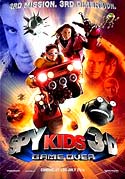 More
3D animated releases in the 2000s included: The
Polar Express (2004), Chicken Little (2005), Monster
House (2006), Meet the Robinsons (2007), Bolt (2008), Coraline (2009),
Cloudy with a Chance of Meatballs (2009), Up (2009), Ice Age: Dawn
of the Dinosaurs (2009), The Fantastic Mr. Fox
(2009), G-Force (2009), Astro Boy
(2009), Disney's motion-capture A Christmas Carol (2009),
James Cameron's and 20th Century Fox's science-fiction tale Avatar
(2009), and Pixar's Toy Story 3 (2010) - to name
just a few. Toy Story 3 (2010) quickly became the
highest-grossing G-rated movie ever, and became the first 2010 release
to cross $400 million in domestic gross box-office. A total of 10
3D animated features were wide-released in 2009 - a record. And four
of 2010's 10 highest-grossing movies were animated - and released
in 3-D: Pixar's Toy Story 3 (2010), Despicable Me
(2010), Shrek Forever
After (2010), and How To Train Your Dragon (2010). More
3D animated releases in the 2000s included: The
Polar Express (2004), Chicken Little (2005), Monster
House (2006), Meet the Robinsons (2007), Bolt (2008), Coraline (2009),
Cloudy with a Chance of Meatballs (2009), Up (2009), Ice Age: Dawn
of the Dinosaurs (2009), The Fantastic Mr. Fox
(2009), G-Force (2009), Astro Boy
(2009), Disney's motion-capture A Christmas Carol (2009),
James Cameron's and 20th Century Fox's science-fiction tale Avatar
(2009), and Pixar's Toy Story 3 (2010) - to name
just a few. Toy Story 3 (2010) quickly became the
highest-grossing G-rated movie ever, and became the first 2010 release
to cross $400 million in domestic gross box-office. A total of 10
3D animated features were wide-released in 2009 - a record. And four
of 2010's 10 highest-grossing movies were animated - and released
in 3-D: Pixar's Toy Story 3 (2010), Despicable Me
(2010), Shrek Forever
After (2010), and How To Train Your Dragon (2010).
In 2011, it was remarkable that the Oscar winner for
Best Animated Feature film was not a Pixar film (no Pixar films were
included among the nominees either), but Rango
(2011),
director Gore Verbinski's Western comedy-adventure.
Older films were also re-released in 3-D: The
Nightmare Before Christmas 3D (2006, original 1993), Toy
Story in 3D (2009, original 1995), and Toy
Story 2 in 3D (2009, original 1999),
and there were indications that the next phase of the 3-D Renaissance
would be more 3D re-releases of classic blockbusters, such as Star
Wars (1977), The
Lord of the Rings (2001-2003), The
Matrix (1999), Top Gun (1986), and Titanic
(1997).
Wallace & Gromit Claymation and other Aardman Productions:
The
British clay-animation studio Aardman Animations was most famous for the Wallace
and Gromit series of 30-minute shorts with clay-animated characters, the first of which was A Grand Day Out (1989). Wallace was a befuddled, cheese-addicted
Englishman inventor, with a silent, wily companion dog named Gromit. Before
becoming recognized, Aardman produced by a series of popular television ads
featuring singing California Raisins (named A.C., Red, Stretch and Bebop), along with claymation expert Will Vinton.
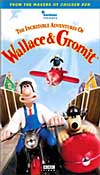 Aardman's writer-director Nick Park was responsible for these
hits: its first Oscar-winning Creature Comforts (1989) which examined
how anthropomorphized zoo animals felt about being placed in confined locations. The thirty-minute mystery Wallace and Gromit - The Wrong Trousers (1993), its second Wallace and Gromit short, with a frantic toy-train
finale - was the Academy Award winner for Best Animated Short Film. Likewise, Aardman's third half-hour short with Wallace and Gromit titled A Close Shave (1995) also won the Oscar for Best Animated Short Film. Aardman's writer-director Nick Park was responsible for these
hits: its first Oscar-winning Creature Comforts (1989) which examined
how anthropomorphized zoo animals felt about being placed in confined locations. The thirty-minute mystery Wallace and Gromit - The Wrong Trousers (1993), its second Wallace and Gromit short, with a frantic toy-train
finale - was the Academy Award winner for Best Animated Short Film. Likewise, Aardman's third half-hour short with Wallace and Gromit titled A Close Shave (1995) also won the Oscar for Best Animated Short Film.
And then along with DreamWorks, Aardman produced their first feature film - the remarkable prison-break parody Chicken Run (2000) about an imprisoned group of egg-laying chickens plotting an escape. Mel Gibson
starred as a cocky Yankee rooster. Its denial of a Best Picture nomination
led to the creation of the Best Animated Feature category - first available
for eligible films in the year 2001. The horror spoof Wallace &
Gromit: The Curse of the Were-Rabbit (2005) was the first feature-length
film starring the pair, and the first stop-motion/'claymation' film
to win the Best Animated Feature Academy Award.
The animated comedy Flushed Away (2006), was co-produced
by Aardman Feature Films and DreamWorks Animation - it was Aardman Films' first completely CGI film about an aristocratic rat named Roddy (voice
of Hugh Jackman) whose life was ruined by a low-brow ruffian rat named Sid
(voice of Shane Richie). The film was originally to be stop-motion claymation,
but due to the abundance of water effects, the entire film was transformed
into CGI -- however, the characters still resembled Aardman's trademark plasticene
characters. |
